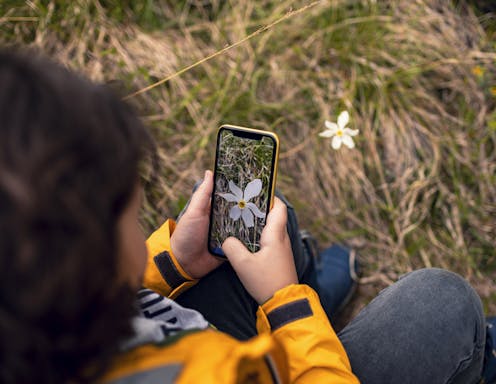Citizen science volunteers are almost entirely white
- Written by Bradley Allf, PhD Candidate in Conservation Biology, North Carolina State University

A few small studies[11] have found that citizen science volunteers[12] tend to be white, well-educated and have high incomes. But this homogeneity of participants is common knowledge among researchers, and few collect detailed demographic data on participants in citizen science.
In our survey, we collected data about race, income and other demographic information. Overall, we received 3,894 responses. Most of the responses – 3,191 – came from the 2016 Christmas Bird Count, the world’s longest-running bird-related citizen science project[13]. Since 1900, thousands of people in the U.S. and abroad have counted birds around Christmas and reported the results to the Audubon Society.
We also collected data from 280 contributors to Candid Critters – a project that uses trail cameras to study wild mammals – and from 423 members of SciStarter.org, an online inventory of citizen science projects.
Overall, 95% of respondents identified as white. The lack of racial diversity was striking for each sample, with 96% of participants in both the Christmas Bird count and Candid Critters identifying as white and 88% of respondents from SciStarter saying the same. While only 14% of the U.S. population[14] has a graduate or professional degree, about half of our survey respondents held these degrees. Additionally, while only 6% of the U.S. population has careers in science, technology, engineering or math[15], almost half of our survey respondents from all three data sources worked in STEM fields.
Participating in citizen science is linked to personal benefits like learning new skills and building community. If citizen science is only reaching educated white science professionals, then it’s concentrating the benefits of participation among this group.
Additionally, if one of the goals of citizen science is to boost science literacy and trust in science, it can’t achieve that goal if it’s preaching to the choir by only reaching people who already work in science.
Finally, a lack of diversity in citizen science could even compromise the quality of the research. For instance, one study[16] found that volunteer water monitors – who were mostly well-educated and white – undersampled areas where environmental concerns disproportionately affected poor communities of color.
Initiatives like Black Birders Week[18] seek to increase the visibility and concerns of people of color interested in the outdoors and science. SciStarter[19], where one of us volunteers as the director of research collaborations, is undertaking a long-term effort to design inclusive citizen science programs. By partnering with community-based groups, schools, churches, companies and libraries, some recent SciStarter initiatives have engaged more than 40% nonwhite participants.
Reforming citizen science with inclusive and equitable practices would not only make the science better but also spread the benefits of these projects more equitably and eventually help bring more diverse perspectives into science generally[20].
References
- ^ CC BY-ND (creativecommons.org)
- ^ counting migrating birds (ebird.org)
- ^ measuring precipitation (cocorahs.org)
- ^ tracking outbreaks of COVID-19 (outbreaksnearme.org)
- ^ gaining knowledge about the fields they are working in (www.mdpi.com)
- ^ skills (eric.ed.gov)
- ^ two researchers (scholar.google.com)
- ^ who study (scholar.google.com)
- ^ new paper (academic.oup.com)
- ^ ajijchan/iStock via Getty Images (www.gettyimages.com)
- ^ small studies (nap.nationalacademies.org)
- ^ citizen science volunteers (doi.org)
- ^ world’s longest-running bird-related citizen science project (auduboncnc.org)
- ^ 14% of the U.S. population (www.census.gov)
- ^ 6% of the U.S. population has careers in science, technology, engineering or math (www.bls.gov)
- ^ one study (theoryandpractice.citizenscienceassociation.org)
- ^ AP Photo/Jacqueline Larma (newsroom.ap.org)
- ^ Black Birders Week (www.blackafinstem.com)
- ^ SciStarter (scistarter.org)
- ^ help bring more diverse perspectives into science generally (par.nsf.gov)
Authors: Bradley Allf, PhD Candidate in Conservation Biology, North Carolina State University
Read more https://theconversation.com/citizen-science-volunteers-are-almost-entirely-white-184997


